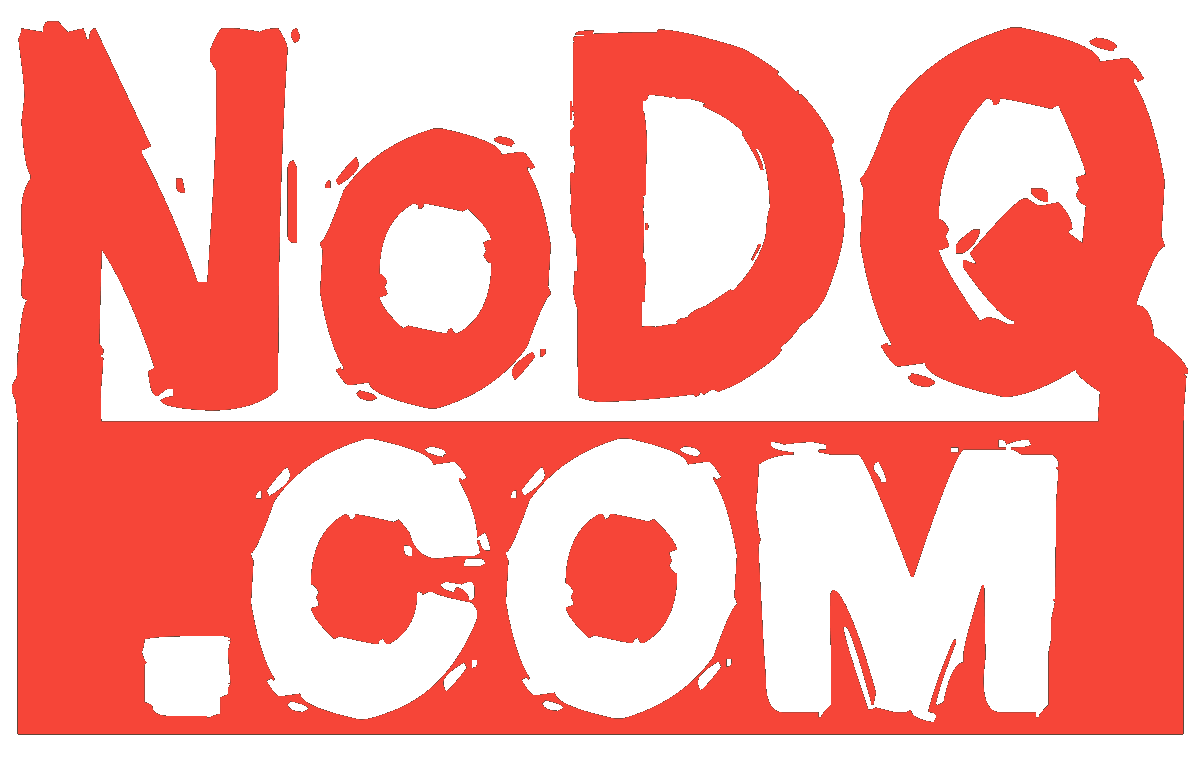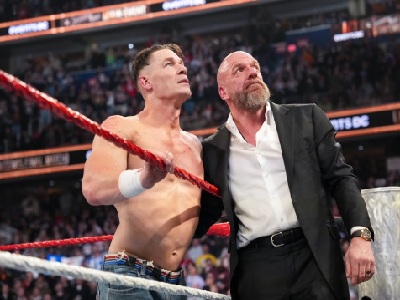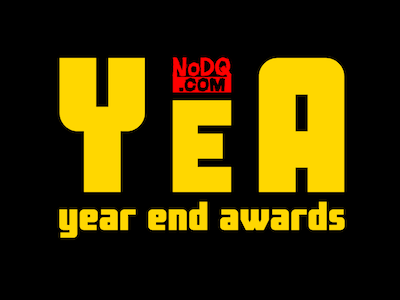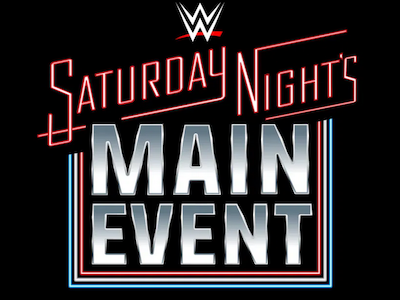MR. TITO: Should WWE Wrestlers Form a Labor Union or Not?
Thanks to the Netflix Vince McMahon documentary, the discussion on whether or not WWE wrestlers should UNIONIZE has been brought up again. Years ago, I wrote a column about whether or not the existing roster (2005 or 2006) should band together and force Vince McMahon to collectively bargain with his wrestlers or not. I discussed the benefits and impacts of WWE employing a pro wrestling union. I had to be careful, as I did not want to make the column political for the sake of politics being heated back. Well, 20 years later, things are even hotter not.
What did I conclude back then?
If I recall what I said (Wayback Machine is not being nice this morning and I don’t feel like digging through hundreds of columns in my archive, as I have every Wordpad file), I believe I stated that Vince McMahon’s firm grip on the business disallowed for unions and that he always compensated his top stars well enough that they wouldn’t join or help form a union. For example, when Hulk Hogan ratted out Jesse Ventura before Wrestlemania 2, that probably exponentially made Hogan’s salary go up significantly along stars of the future. After all, if the top stars are happy and can maximize their earnings individually versus collectively as a group, then a union would be difficult to form.
Of course, market forces can take over, too… Why I appreciate WCW the most is that it caused WWE to change and it forced their hands to begin to pay ALL talent more and offer more guaranteed money. However, once WCW died, salaries became stagnant again and essentially were that for 20 years. Then, AEW arrives and wrestlers started getting paid again.
So if market competition is helping to drive wages up anyway, why form a wrestler union in the WWE?
Well, what guarantees competition will always be there? AEW’s numbers are in major decline for 2024 with viewership, PPV buys, attendance, and merchandise. Sure, a desperate-for-live-sporting-content Warner Bros. Discovery just paid up to $185 million per year for all of your content, but they have like $45 billion in debt to resolve. What if they file bankruptcy? And then, it’s just WWE has the sole buyer of wrestling talent. There’s a term in economics called “Monopsony” where there exists only one major buyer of labor. If this AEW experiment keeps declining or doesn’t last through its 5 year deal with WBD, WWE shall return to being that major dominant employer again.
Getting back to unions, they are situations at a workplace where workers collectively band together and negotiate labor deals together. The term “collectively bargain” is when the employer and the employees negotiate a new contract, as labor union deals often have an expiration date put in place to the benefit of the union so that they can renegotiate better salaries and benefits on the newer deal. If they don’t like the newer deal that the employer offers, they may go on strike and actively refuse to work until a better deal is presented to them. The employer could respond by either providing a newer deal or hiring non-union workers as replacements which unions call as “scabs”. After a strike, anyone who tried to be a replacement worker are often denied entry into a union.
For an employer, thanks to the Taft-Hartley Act of 1947, they are allowed to hire non-union workers because this act officially gave them the flexibility to hire beyond a “closed shop”. This is the same act that has allowed many states in the United States to become a “right to work” state, meaning that it has denied unions from even being allowed to form. So, even if the WWE wrestlers formed a union today, WWE and TKO would not have to deal exclusively with them.
The wrestler union’s success would depend on FULL representation of the ENTIRE roster. From the top drawing stars, to the very bottom. FULL participation or else any cracks in that legion would allow an employer to hire outside of that union.
What are the benefits of being in a union?
• Better pay for everyone, particularly the bottom and middle scales of the wrestlers
• Better benefits, specifically retirement and healthcare
• Union contracts expiring allow for renegotiations when revenues are going up
• Better protections for workers, such as safety and hours worked
What are the negatives of being in an union?
• Contracts are often based on seniority, not performance
• Sometimes protects under-performing employees to maintain “strength in numbers”
• Union contracts expiring hurts negotiations if revenues are going down
• Pay-as-you-go system for retirement benefits, current workers pay for retirees that causes issues when workbase shrinks but retirees live longer
With Labor Unions, they have to exist in an environment that is MAKING MONEY. Where the pain begins is when the revenues are declining due to competition, lack of a newer business model to modernize, or the product just lots its demand. Furthermore, their workers cannot be replaced… Where the automobile industry has issues is when an auto producer can easily ship their production to Mexico or order much of the parts to be built in other countries. If that good can be created cheaper or more effectively in another country, it’s game over for a unionize workshop. I know that personally with the Steel industry, as South Korean and Japanese steel have taken over everything and caused many plants here in the Midwest to close.
For WWE right now, they are making TONS of money and thanks to those television deals, they’ll be making money for YEARS. In fact, the WWE has been profitable each year since 1997. Things were tough from 1993 to early 1997 until the WWE changed their business model, began to push new stars, and stop half-assing their television product. Not only that, their recent growth has caused significant amounts of revenue to come pouring in. WWE just signed a 10-year, $5 BILLION deal with Netflix which will at least guarantee $500 million of revenue per year over the next 5 years while their Smackdown deal with USA Network gives them $280 million of revenue per year over the next 5 years as well. WWE is set to make $780 million per year in revenues just by airing RAW and Smackdown. Holy cow.
THAT is where I think a Labor Union has more effectiveness to exist and give more to their collective… REVENUE SHARING.
Look at the NBA and NFL in particular. They have MASSIVE television contracts while making bank on attendance and merchandise. Plus, most of their stadiums are locally funded by tax dollars, too. NBA is a declining sport yet it just ripped off Amazon, NBC, and ESPN for massive contract deals. NFL is a massive money maker… Yet, if you look at those leagues, their issue is revenue sharing as the players want an increasing amount of the pie and the NFL players really have to fight for it because their salaries don’t have to be guaranteed like the NBA. Both NFL and NBA have revenue sharing models, too, that share across the entire league and both have salary caps.
Major League Baseball is different… While they have revenue sharing, it’s not evenly distributed like the NBA or NFL. Thus, bigger markets can make more money with their TV deals and remain way ahead competitively. It’s no secret, as the Los Angeles Dodgers and New York Yankees just played in the World Series as two of the richest teams in baseball. Still, players have a union and can strike against their rising revenue streams that benefit all teams such as a national TV contract.
Then, you have leagues like NASCAR, UFC, PGA, Tennis… They don’t have unions, but they are more individual sports. Their top guys can maximize their earnings based on individual achievements. BUT, only their top guys earn strongly and that is purely from winning and obtaining the best sponsorships. In the case of UFC, however, if you start losing fights, your career is significantly downgraded and earnings go down without anything to fallback on for the future.
Pro wrestling is sort of an individual sport, but it’s also a major team effort to pull off a show. The top wrestlers can earn more money and distance themselves from the field, but they do need opponents to wrestle and people to fill the entire card. Plus, wrestling has like an internal farm system. A tag wrestler that you see today could become your World Champion in the future. Roman Reigns was that when he first started and then was pushed to be the top guy. Bret Hart and Shawn Michaels were once exclusively tag team wrestlers. Steve Austin was the “Ringmaster” and was shockingly bad with that gimmick, but soon rose up to the top as “Stone Cold”.
BUT, there is an internal “income inequality” between the top stars and everyone else. The highest paid WWE wrestler is Roman Reigns and he’s paid a reported (Sports Illustrated = Source) $5 million in downside salary and he’ll earn incentives from gates and merchandise (I’ve heard ne earns at least $10 million, if not more, per year with everything combined). But beyond that, much of the other main eventers (besides Lesnar) are making $3 million or less, if that… Only longtime veterans are breaking that $2 million threshold. Then, the WWE has a ton of wrestlers making between $250 million starting out to maxing out around $1.5 million, depending on how long they’ve been there or their own elevation.
To many, they’d accept $1.5 million BUT you’d have to think about Federal Income Taxes plus State Taxes taking at least 40-50% of that, off the top. Oh, and you’re paying an accountant to help you with that along with taking out HIGHER PREMIUM insurance policies because WWE isn’t providing that as a benefit. Want to retire? Better save a portion of that or pay your own Social Security taxes (peaking at a certain amount).
Meanwhile, you consider those salaries versus what the WWE’s revenue has become, PARTICULARLY since the 2007-2009 recession ESPECIALLY when those 2014 and 2019 TV deals began which boosted WWE’s revenue significantly. Since the late 2010s, you also have the Saudi Arabia deals and bigger Wrestlemania event revenues pumping in money. Looking at WWE’s 2020 numbers, you’d think that COVID-19 or that 2020 recession never hit them!
WWE Revenue History (source: WWE.com’s 10-K annual reports):
2001: $438 Million
2002: $410 Million (decline!)
2003: $374 Million (decline!)
2004: $375 Million
2005: $366 Million (decline!)
2006: $263 Million (decline!)
2007: $317 Million
2008: $526 Million
2009: $475 Million (decline!)
2010: $478 Million
2011: $484 Million
2012: $484 Million (flat)
2013: $508 Million
2014: $543 Million
2015: $659 Million
2016: $729 Million
2017: $801 Million
2018: $930 Million
2019: $960 Million
2020: $974 Million
2021: $1.09 Billion
2022: $1.29 Billion
2023: $1.33 Billion
Let’s assume that I’m Roman Reigns and that I have been paid $5 million per year since 2020. For 2021, I’m earning 0.46% of WWE’s revenue while for years 2022 and 2023, I’m earning 0.38% and then 0.36% of revenue each year. Compare that to 2020, where Roman would have earned 0.51% of WWE revenues.
Then, consider what has already started for 2024 and that is a new deal with USA Network for $280 million per year while beginning to make $500 million per year with the Netflix deal starting in 2025.
But is the WWE re-negotiating current wrestler deals to adjust for the higher revenues coming in? NO, THEY AREN’T.
Will the WWE provide health insurance or benefits to their independent contracting performers? NO, THEY WON’T.
If WWE wrestlers were to unionize, it HAS to come from Roman Reigns and the other Main Eventers organizing it. If they have ZERO interest in organizing it, WWE becoming a union won’t happen.
One would think that Roman Reigns SHOULD try to get more than just 0.36% of WWE’s revenue himself, as it can be seriously argued that WWE arenas and television viewership numbers are directly related to him… BUT, he gets to wrestle SIX days per year now and getting picked up on WWE’s private jet to fly anywhere they need him. Do you think that he’s going to complain about what he’s getting paid to BARELY work? Are you kidding me? He’s still making good money and gets to spend so much time with his family.
That is what the WWE does best… If you’re the top star, they’ll treat you like gold (besides what should be an even higher salary) with perks and flexibility to keep you satisfied enough to not create an uproar.
And All Elite Wrestling (AEW) literally has the same business model. Unless you do more than just wrestle, like being an EVP or holding some other additional job title, you are STILL an “independent contractor” and will NOT have health or retirement benefits. Now, AEW is a little nicer on allowing you to wrestle elsewhere compared to WWE forcing exclusive rights to perform, but AEW is still treating each wrestler mostly like how WWE does. That’s a fact.
And thanks to their new Warner Bros. Discover TV deal for somewhere between $150-$185 million per year, do you see Tony Khan re-negotiating deals to share more revenue with all of his independent contactors? NOPE. And he won’t…
For a labor union’s existence in pro wrestling or in entertainment, it’s not so much protecting their numbers, benefits, or overall salaries, it’s the amount of revenue sharing that matters with the talent themselves to allow for everyone to earn more. Watch how NFL, NBA, and MLB players talk… They want the percentages dedicated to player salaries to be HIGHER from the revenues earned by the owners. THEN, the force a minimum amount that a team MUST pay, especially NBA and NFL with their salary caps.
WWE’s revenues keep growing… So the question is this: Do the WWE wrestlers want more of that pie or are they willing to allow their earnings to plateau?
Because if WWE wrestlers don’t fight for what they are paid or embolden their competition as a legitimate threat destination to join (AEW, TNA, etc.), WWE and TKO will gladly keep their pay capped while their revenues continue to grow.
Mr. Tito Column Archive @ NoDQ






